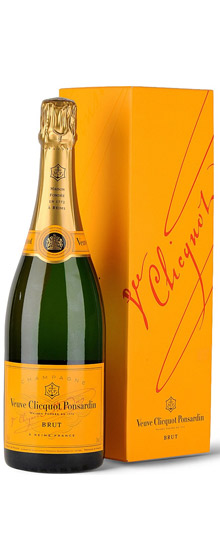Veuve Clicquot Ponsardin (French pronunciation: [vøv kliko pɔ̃saʁdɛ̃]) is a French champagne house based in Reims, specializing in premium products. Founded in 1772 by Philippe Clicquot-Muiron, Veuve Clicquot played an important role in establishing champagne as a favored drink of haute bourgeoisie and nobility throughout Europe. The 1811 comet vintage of Veuve Clicquot is theorized to have been the first truly "modern" Champagne due to the advancements in the méthode champenoise which Veuve Clicquot pioneered through the technique of remuage. In 1772, Philippe Clicquot-Muiron established the original enterprise which, in time, became the house of Veuve Clicquot. In 1775, it was credited to be the first Champagne house to produce rosé Champagne, using the method of adding red wine during production. Philippe's son, François Clicquot, married Barbe-Nicole Ponsardin in 1798 and died in 1805, leaving his widow (veuve in French) in control of a company variously involved in banking, wool trading, and Champagne production. She became the first woman to take over a Champagne house. Under Madame Clicquot's guidance, the firm focused entirely on the last, to great success. During the Napoleonic Wars, Madame Clicquot made strides in establishing her wine in royal courts throughout Europe, notably that of Imperial Russia, thus becoming the first Champagne house to ship Champagne through the blockade to Russia in 1811. During this time, she also gave Champagne to the Prussian guards enforcing the blockade and the soldiers opened the champagne with their swords, so started the technique of sabring Champagne. By the time she died in 1866 Veuve Clicquot had become both a substantial Champagne house and a respected brand. Easily recognised by its distinctive bright yellow labels, the wine holds a royal warrant from Queen Elizabeth II of the United Kingdom. Since 1987 the Veuve Clicquot company has been part of the Louis Vuitton Moët Hennessy group of luxury brands, and today owns a controlling interest in New Zealand's Cloudy Bay Vineyards. Veuve Clicquot is featured in several famous films, including Casablanca and Babette's Feast. Madame Clicquot is credited with a great breakthrough in champagne handling that made mass production of the wine possible. In the early 19th century, with the assistance of her cellar master, Antoine de Müller, Clicquot invented the riddling rack that made the crucial process of dégorgement both more efficient and economic. Clicquot's advance involved systematically collecting the spent yeast and sediments left from the wine's secondary fermentation in the bottle's neck by using a specialised rack. Composed much like a wooden desk with circular holes, the rack allowed a bottle of wine to be stuck sur point or upside down. Every day a cellar assistant would gently shake and twist (remuage) the bottle to encourage wine solids to settle to the bottom. When this was completed. the cork was carefully removed, the sediments ejected, and a small replacement dose of sweetened wine added.
